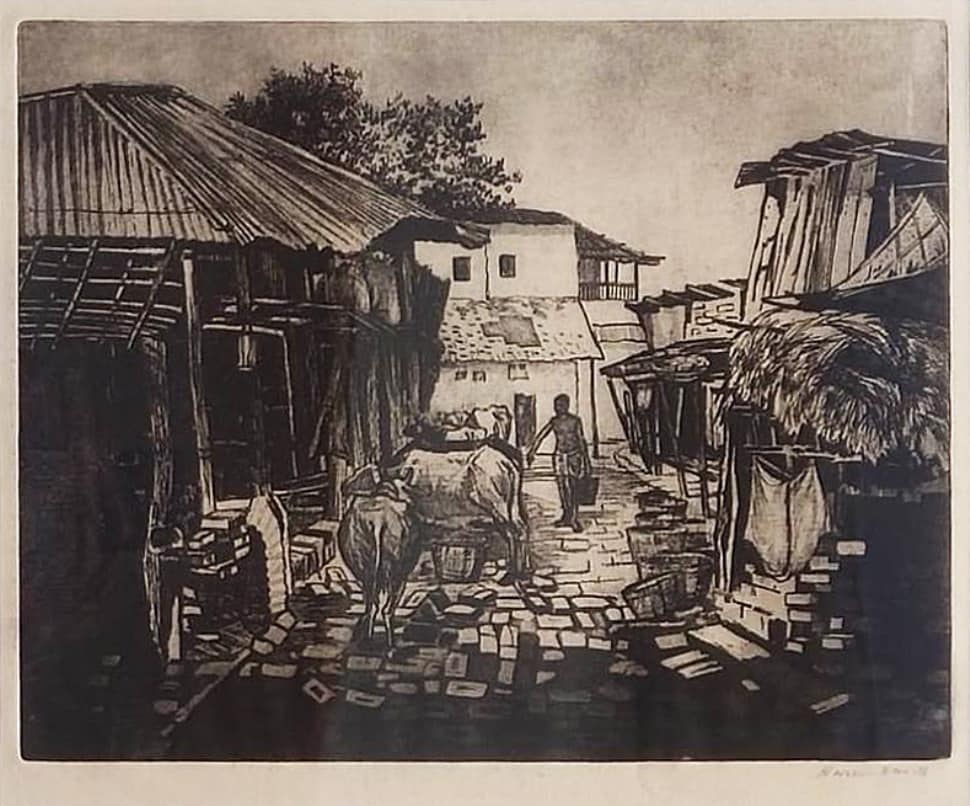Born in Dinajpur in present day Bangladesh on 1 February 1921, Das took a diploma in fine art, with specialisation in graphic arts, from the Government College of Arts and Crafts, Calcutta, in 1938. Upon graduation, he joined his alma mater as a lecturer and soon introduced line engraving and etching in the college’s curriculum.
His works included engravings, linocuts, etchings, and lithographs but he especially excelled in woodcuts. Taken from densely engraved or sparsely cut wood blocks, his prints are both technically and artistically superior. A dexterously crafted equilibrium of black and white, at times washed with thin layers of colour, detailed renditions of objects and elements, simplicity of composition and petite format characterise his prints. No viable art market existed in India till the 1960s, with few takers for prints in its narrow horizon. Das, however, continued with his passion, exhibiting extensively in India and abroad.
Das’s career flowered at a time of great political and social turbulence in India, especially in his native Bengal. Yet, he turned to rural Bengal’s idyllic life, perhaps as a respite. In chronicling vignettes from countryside in his prints, documenting people’s daily lives, Das recorded a reality of the times that was easily overshadowed by concurrent epochal events. He passed away in Calcutta in 1993.












